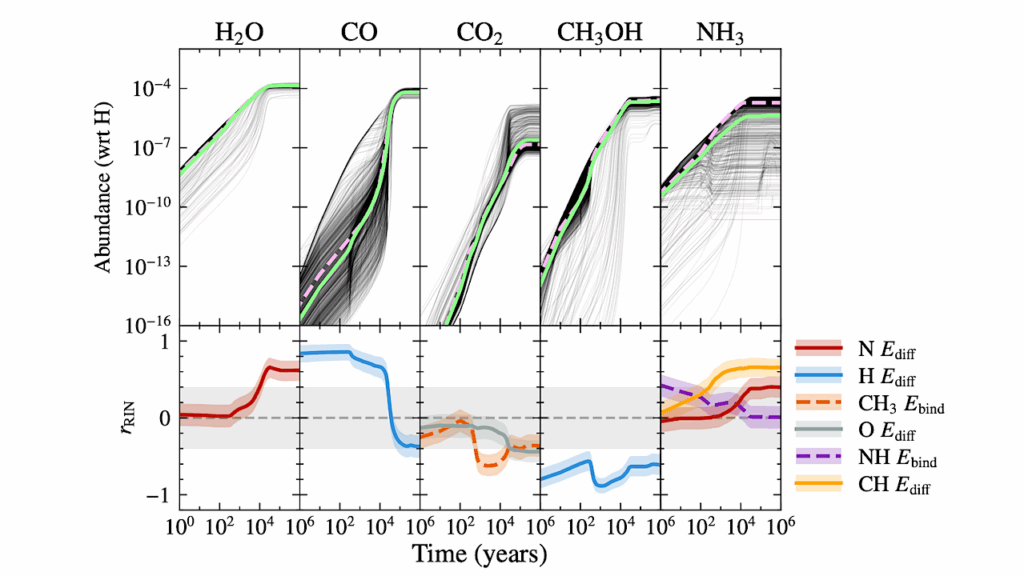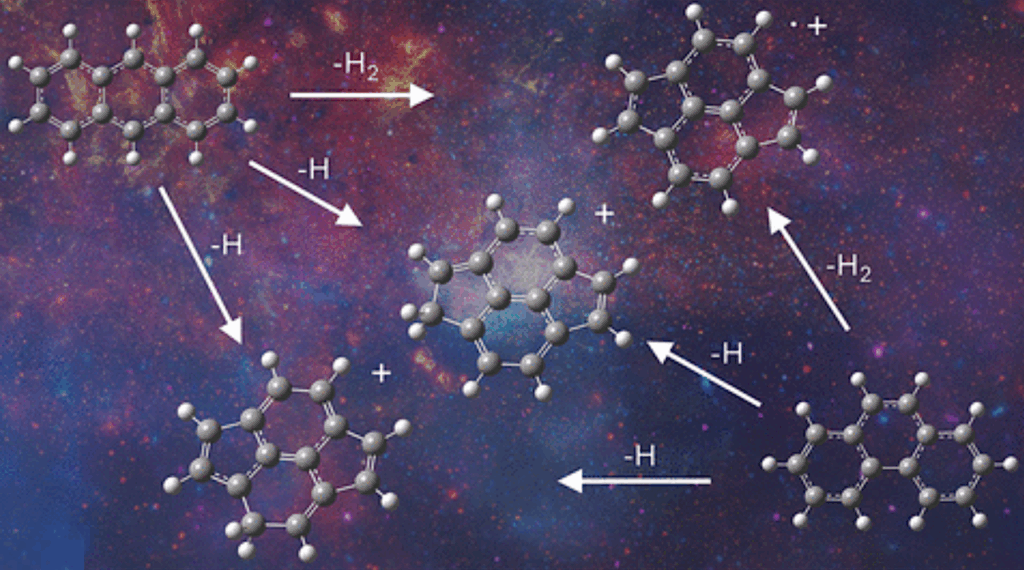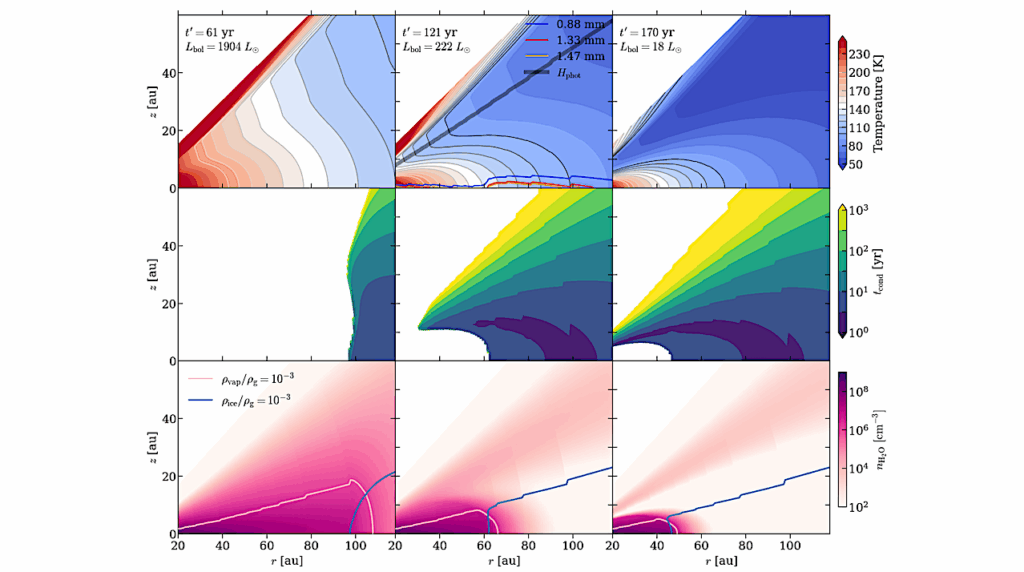Ammonia In The Interstellar Medium Of A Starbursting Disc At z=2.6

We report the detection of the ground state rotational emission of ammonia, ortho-NH3 (JK=10→00) in a gravitationally lensed, intrinsically hyperluminous, star-bursting galaxy at z=2.6. The integrated line profile is consistent with other molecular and atomic emission lines which have resolved kinematics well-modelled by a 5 kpc-diametre rotating disc.
This implies that the gas responsible for NH3 emission is broadly tracing the global molecular reservoir, but likely distributed in pockets of high density (n≳5×104 cm−3). With a luminosity of 2.8×106 L⊙, the NH3 emission represents 2.5×10−7 of the total infrared luminosity of the galaxy, comparable to the ratio observed in the Kleinmann-Low nebula in Orion and consistent with sites of massive star formation in the Milky Way.
If LNH3/LIR serves as a proxy for the ‘mode’ of star formation, this hints that the nature of star formation in extreme starbursts in the early Universe is similar to that of Galactic star-forming regions, with a large fraction of the cold interstellar medium in this state, plausibly driven by a storm of violent disc instabilities in the gas-dominated disc. This supports the ‘full of Orions’ picture of star formation in the most extreme galaxies seen close to the peak epoch of stellar mass assembly.
M. J. Doherty (Hertfordshire), J. E. Geach, R. J. Ivison, K. M. Menten, A. M. Jacob, J. Forbrich, S. Dye
Comments: 5 pages, 3 figures, accepted for publication in MNRAS Letters
Subjects: Astrophysics of Galaxies (astro-ph.GA)
Cite as: arXiv:2209.09268 [astro-ph.GA] (or arXiv:2209.09268v1 [astro-ph.GA] for this version)
Submission history
From: Matthew Doherty Mr
[v1] Mon, 19 Sep 2022 18:00:07 UTC (628 KB)
https://arxiv.org/abs/2209.09268
Astrobiology, Astrochemistry








